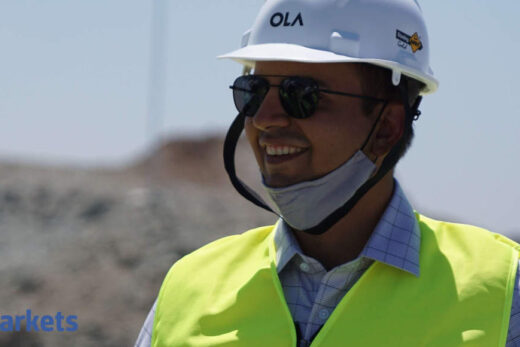Analysts largely expect Covid cases in Maharashtra to peak by May and in the country by June-end. They believe a pick-up in the vaccination drive and comforting management commentaries in the ongoing results season should allay the worst fears of investors about the second wave in the coming weeks.
Drawing parallels with the second wave in 12 other nations, foreign brokerage CLSA has predicted a peak in daily case additions in Maharashtra in May and in the country as a whole in June.
The situation so far is grim with daily Covid case count rising to 3 lakh-plus in the past couple of days. Some 3,286 deaths in the past 24 hours have pushed India’s death toll past the 2 lakh mark. Fears of a halt to economic activity have triggered a Rs 10,905 crore worth of outflow of foreign portfolio money from domestic equities so far this month and hit the rupee badly.
CLSA said various parameters suggest Maharashtra Covid cases should peak anytime between now and the end of May. It foresees chances of some relaxation in the current lockdown measures sometime between mid-May and mid-June.
“This is likely to be seen by the market as a glimmer of hope and a possible playbook for the rest of India, where the situation may come under control by June. These parallels from other countries indicate that the market may start seeing positive signs on the Covid-19 front in the coming weeks. This, along with a pickup in vaccinations and not-so-bad management commentary during the ongoing results season, may allay the worst fears for investors regarding the impact of a second wave of the virus,” the brokerage said.
Nomura India said mobility has be hit significantly by the second wave, and there are signs of the pain spreading to the wider economy, as suggested by power demand, GST e-way bills and railway freight. That said, the impact still appears small compared with the first wave. Also, other indicators such as labour force participation rate have been resilient so far.
“With more states extending restrictions, sequential momentum is likely to remain weak over the next month, hurting GDP growth. There are also reasons to expect a muted economic impact. The experience from other countries suggests lower correlation between falling mobility and growth. Parts of the economy like manufacturing, agriculture, or work-from-home and online-based services should remain resilient,” Nomura India said.
The foreign brokerage said as the pace of vaccinations picks up, there should be another return of pent-up demand, in addition to tailwinds such as strong global growth, lagged impact of easy financial conditions, and front loaded fiscal spending.
CLSA said its findings suggest the seven-day moving average daily case addition during the second wave in 12 countries peaked when the reported cumulative infections hit a median of 2.5 per cent of the population in the those nations.
“This peak was hit when incremental cases from the start to the peak of the second wave hit an equivalent of 2 per cent of the population (range of 0.5 per cent to 4.7 per cent). It took a median time of nearly four months for the second wave peak from the bottom of the first wave. At the peak of the second wave, the seven-day moving average of percentage positive cases in these countries hit a median level of 14.4 per cent,” it said.
For India, the second wave has just crossed the four-month mark for Maharashtra, but it has been less than 70 days for the rest of the country.
“Therefore, India may get to this median mark of four months by mid-June 2021, and India ex-Maharashtra by end-June,” CLSA said.
YES Securities said that around 40 per cent of the country’s population could be fully vaccinated — both doses of vaccines — by November and the number could go up to 60 per cent by January 2022. It sees herd immunity in India by January 2021. At present, the World Health organization defines herd immunity from Covid-19 at 60-70 per cent of the population.
While the brokerage remains positive on domestic equities, it does not rule out the possibility of a 4-6 per cent correction in the market on fears of possible impact on economic recovery, damage to small businesses and postponement of consumption.
“However, the equity indices should swiftly recover back as well once the case curve peaks,” the brokerage said.



